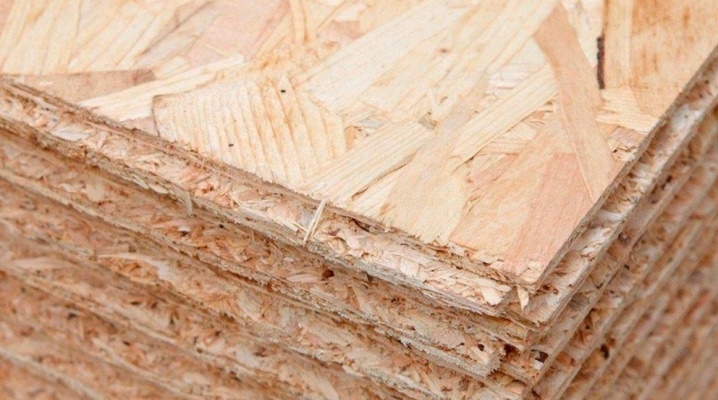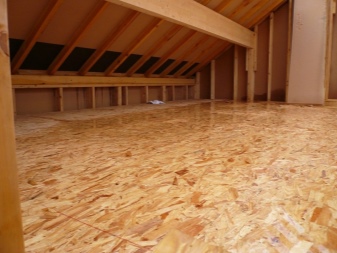OSB Ultralam

Today in the construction market there is a huge selection of different materials. OSB boards are gaining more and more popularity. In this article we will talk about Ultralam products, their pros and cons, applications, and technical characteristics.


Peculiarities
Roughly speaking, OSB-board is several layers of wood chips, shavings (woodworking waste), glued and pressed into sheets. A feature of such boards is the stacking of shavings: the outer layers are oriented longitudinally, and the inner layers are oriented transversely. Various resins, wax (synthetic) and boric acid are used as an adhesive.

Let's take a look at the distinctive features of Ultralam boards.
The advantages of this product include:
- high strength of products;
- affordability;
- attractive appearance;
- long service life;
- unified dimensions and shape;
- moisture resistance;
- lightness of products;
- high resistance to decay.
The disadvantages include low vapor permeability and possible evaporation of resins used as an adhesive.
This situation can arise if environmental requirements are not met in the production of OSB boards.


Specifications
OSB products are divided into several types, depending on their technical characteristics and scope of use. Let's list the main ones.
- OSB-1. They differ in low parameters of strength and moisture resistance, they are mainly used for the manufacture of furniture, as well as as a covering and packaging material (only in low humidity conditions).
- OSB-2. Such plates are quite durable, but they strongly absorb moisture. Therefore, their scope of application is load-bearing structures in rooms with dry air.
- OSB-3. Resistant to both mechanical stress and moisture. Of these, support structures are mounted in humid climates.
- OSB-4. The most durable and moisture resistant products.

In addition, they are distinguished by lacquered, laminated and grooved boards, as well as sanded and non-sanded. Grooved products are slabs made with grooves at the ends (for better adhesion when laying).

The assortment of OSB boards is presented in the following table.
|
OSB |
Format (mm) |
6 mm |
8 mm |
9 mm |
10 mm |
11 mm |
12 mm |
15 mm. |
18 mm. |
22 mm. |
|
Ultralam OSB-3 |
2500x1250 |
+ |
+ |
+ |
+ |
+ |
+ |
+ |
+ |
+ |
|
Ultralam OSB-3 |
2800x1250 |
+ |
||||||||
|
Ultralam OSB-3 |
2440x1220 |
+ |
+ |
+ |
+ |
+ |
+ |
+ |
+ |
|
|
Ultralam OSB-3 |
2500x625 |
+ |
+ |
|||||||
|
Thorn groove |
2500x1250 |
+ |
+ |
+ |
+ |
+ |
||||
|
Thorn groove |
2500x625 |
+ |
+ |
+ |
+ |
+ |
||||
|
Thorn groove |
2485x610 |
+ |
+ |
+ |
An important clarification - here is the serial production of Ultralam. As can be seen from the above data, the company does not mass-produce products of the OSB-1 and OSB-2 types.
The technical characteristics of products of different thicknesses naturally differ. For clarity, they are also presented in the table below.
|
Index |
Thickness, mm |
||||
|
6 to 10 |
11 to 17 |
18 to 25 |
26 to 31 |
32 to 40 |
|
|
Limit of resistance to bending along the main axis of the slab, MPa, not less |
22 |
20 |
18 |
16 |
14 |
|
Limit of resistance to bending along the non-main axis of the slab, MPa, not less |
11 |
10 |
9 |
8 |
7 |
|
Bending elasticity along the main axis of the slab, MPa, not less |
3500 |
3500 |
3500 |
3500 |
3500 |
|
elasticity when bending along the non-main axis of the slab, MPa, not less |
1400 |
1400 |
1400 |
1400 |
1400 |
|
Limit of tensile strength perpendicular to the surface of the slab, MPa, not less |
0,34 |
0,32 |
0,30 |
0,29 |
0,26 |
|
Expansion in thickness per day, no more,% |
15 |
15 |
15 |
15 |
15 |
Applications
OSB boards are used as both a constructional and a finishing material. Of course, putting OSB-3 slabs on furniture is a little irrational, but they are almost ideal as flooring or wall cladding. They retain heat well in the room, are visually attractive, poorly absorb moisture (especially varnished), therefore they are less prone to deformation due to swelling.


The main areas of application of OSB boards:
- wall cladding (both outside and inside the room);
- supporting structures for roofs, roofs;
- bearing (I-beams) beams in wooden buildings;
- flooring (rough single-layer floors);
- furniture production (frame elements);
- production of thermal and SIP panels;
- reusable formwork for concrete special work;
- decorative finishing panels;
- ladders, scaffolding;
- fences;
- packaging and transport containers;
- racks, stands, boards and more.
OSB boards are an almost irreplaceable material for renovation or construction. The main thing that you should pay attention to when choosing is the type of product and its technical characteristics.

















The comment was sent successfully.